近年では, CNCプロトタイプの機械加工 製造と製品開発の世界でゲームチェンジャーとして浮上しました. 企業がより速く求めるように, より費用対効果, プロトタイプを作成するためのより正確な方法, CNC加工 キャスティングのような従来の製造方法の魅力的な代替品として上昇しました, 射出成形, および手動機械加工.
この革新的なアプローチは、高度なものを使用しています コンピューター数値制御 (CNC) 優れた精度で高品質のプロトタイプを作成するためのテクノロジー. 従来のプロセスとは異なり, CNCプロトタイプの機械加工 企業、特に中小企業やスタートアップが実験できるようになります, 革新, また、禁止コストを負わずに新しいアイデアをテストします.
この記事では、CNCプロトタイプの機械加工を詳細に説明します, その原則を含む, 利点, 制限事項, 材料オプション, コストを最適化するための実用的な戦略.
CNCプロトタイプの機械加工とは何ですか?
CNCプロトタイプの機械加工 利用するプロセスです コンピューター支援設計 (CAD) さまざまな材料からプロトタイプまたは最終コンポーネントを作成する際に機械を導くモデルとCNCプログラミング. それはです 減算的な製造プロセス, つまり、材料が固体ブロックから削除されます (ワークピース) 望ましい形状を達成するため.
CNCプロトタイピング加工プロセスの4つのステップは何ですか?
どのように疑問に思った 単純なアイデアは本物に変わります, しっかりした部分 CNCプロトタイピングの使用? old魔法のように思えるかもしれません, しかし、それは実際に続きます 4つの簡単なステップ. 各ステップは重要な役割を果たします デザインを正確なプロトタイプに変えます.
🖥️ステップ 1: 部品を設計します (CADモデリング) 🎨
旅はaで始まります コンピューターにデザインします. これがあなたが作成する場所です 3Dモデル 作りたい部分の.
🔍 使い方:
- エンジニアの使用 CADソフトウェア (コンピュータ支援設計)パーツをスケッチします.
- モデルには含まれます すべての詳細 - サイズのような, 形, 穴, および表面の特徴.
- 毎 測定と仕様 CNCマシンが知っているので、ここにロックされています 正確に何をすべきか.
💡 実生活の例:
設計を考えてください カスタム電話スタンド. 追加します ケーブルを充電するためのスロット, 斜めのサポート 安定性のため, そして あなたの名前を刻みます あなたが望むなら!
🎯 プロのヒント:
シンプルなデザイン は より安く、より速い 機械に. 派手な曲線や小さな穴が必要ない場合, それを簡単に保ちます!
🛠️ステップ 2: 設計をマシンコードに変換します (カムプログラミング) 🧠
今, コンピューターモデルが必要です 「機械の言語を話してください。」 そこです CAMソフトウェア (コンピュータ支援製造) 入ってくる.
🔍 使い方:
- CADファイルはに変換されます Gコード.
- Gコード aのようです レシピ CNCマシンの場合 - それをテリングします どこに移動しますか, どれだけ速く, そして カットするのはどれほど深いか.
- の マシンオペレーターのチェック 確認するプログラム すべてが正しく設定されています.
💡 実生活の例:
あなたがクッキーを焼いていると想像してみてください. の CADデザイン のようなものです クッキー形状テンプレート, そして Gコード のようなものです 段階的なレシピ マシンが従うことができます.
🎯 プロのヒント:
マシンはそうですが 非常に正確です, ある クイックプログラムテスト できる 間違いをキャッチします の前 実際の機械加工が始まります.
⚙️ステップ 3: CNCマシンをセットアップします
さあ、その時です マシンを準備してください. 適切なセットアップなし, さえ 最高のデザインは正しくありません.
🔍 使い方:
- の ワークピース(マテリアルブロック) は 確保されています だから 動かない 機械加工中.
- の 切削工具(ドリルのように, 工場, または旋盤) は インストール.
- の 機械設定(のように スピード, 送り速度, と深さ) は 微調整 に基づいて 材料 使用されています.
💡 実生活の例:
これを考えてください バーベキューグリルのセットアップ. あなたが必要です 適切なツール, の 正しい熱, そして 材料の準備ができました 前に あなたは料理を始めます.
🎯 プロのヒント:
ダブルチェックします ワークの配置 - a 小さな不整合 につながる可能性があります 費用のかかるエラー.
🏎️ステップ 4: プロトタイプを機械加工し、最終部品を検査します
これが場所です 魔法が起こります! CNCマシンは続きます プログラムされた指示 に カット, カーブ, プロトタイプを形作ります.
🔍 使い方:
- マシンは材料の切断を開始します, に続いて Gコードの指示
- マシンが機能するように, それ レイヤーを削除します 素材の - 彫刻家のように彫像を彫ります.
- 加工が完了したら, 部品はaを通過します 品質チェック それを確保するために すべての仕様を満たします.
💡 実生活の例:
あなたが使用していると想像してください 3Dプリンター, しかし、の代わりに レイヤーの追加, CNCマシンはです レイヤーの削除 最終部品を作成します.
🎯 プロのヒント:
使用 キャリパー またはa 三次元測定機 (測定機を調整します) に 重要な寸法を再確認します - 特に タイト耐性部品.
for 4つのステップのクイック要約
| 🛠🛠️ ステップ | ⚙⚙️ 何が起こるのですか |
| 🖥🖥️ 部品を設計します | プロトタイプの3D CADモデルを作成します. |
| 🧠 マシンをプログラムします | CADモデルを機械可読性Gコードに変換します. |
| 🔩 マシンをセットアップする | 素材を固定し、ツールを準備します. |
| 🛠🛠️ 機械 & 検査します | 部品を切り取り、正確さを確認してください. |
🎯なぜこれらのステップがそれほど重要なのか?
CNCプロトタイピングの機械加工だけではありません 切断材料 - それはについてです 精度, 一貫性, と効率. スキップ または 急いで を通して 任意のステップ につながる可能性があります:
- 欠陥のある部品🚨
- 無駄な材料💸
- 機械の損傷🛠🛠️
完了したら 正しく, けれど, CNCプロトタイピング あなたのアイデアを現実に変えます-素早く, 正確に, そして効率的に.
CNC加工とCNCプロトタイプの機械加工の違いは何ですか?
製造業を初めて使用する場合, CNC加工 そして CNCプロトタイプの機械加工 同じことのように聞こえるかもしれません. 結局, どちらも関与します コンピューター制御されたマシンカッティング材料 正確な形に. しかし、これらのプロセスは機能します さまざまな目的 で使用されます 生産のさまざまな段階.
side並べる比較
| 特徴 | CNC加工 | CNC試作加工 |
| 🛠🛠️ 目的 | 完成部品の大量生産 | 設計概念のクイックテスト |
| ⚙⚙️ 使用される材料 | 最終材料 (例えば, アルミニウム, 鋼鉄) | コスト効率のための安価な材料 |
| 🎯 精度レベル | 高精度 & 正確さ | 高精度, しかし、機能的な焦点 |
| 🕒 生産時間 | 長い (一貫性のために最適化されています) | もっと早く (迅速なテスト用に最適化されています) |
| 💰 料金 | より高い (素材のため & 設定) | より低い (一時的な資料を使用します) |
| 🔍 デザインの変更 | 生産後に調整するのは難しい | 新しいアイデアを変更してテストするのは簡単です |
| 🏭 出力 | 生産対応の部品 | プロトタイプまたはテストモデル |
cncマシニングをいつ使用する必要がありますか?
🔧 CNC加工 です 頼りになる選択 必要なとき:
- 量産 の部品の 長期使用.
- 高精度コンポーネント それは完全に一緒になります.
- 強い, 耐久性のある部分 から作られています 金属またはタフなプラスチック.
💡 例:
- 製造エンジンブロック 何千もの車のために. 🚗
- 医療インプラントの生産 厳しい許容範囲で. 🏥
CNCプロトタイプの機械加工をいつ使用する必要がありますか?
🔧 CNCプロトタイプの機械加工 あなたが最良の選択です:
- 必要 高速プロトタイプ テストします 形状, フィット, および機能.
- 期待する デザインの変更 そして必要です 柔軟性.
- したい お金を節約します 使用して 安価な素材.
💡 例:
- 新しいスマートフォンケースのデザインのテスト 大量生産の前. 📱
- カスタムマシンパーツのプロトタイプの作成 顧客のフィードバックを得るため.
and両方を使用できますか? 絶対に!
多くの企業が使用しています 両方の方法 一緒に:
- CNCプロトタイプの機械加工から始めます デザインをテストします. 🛠🛠️
- デザインを完成させたら, に切り替えます CNC 機械加工 または 量産. 🏭
💡 実世界の例:
あなたが設計していると想像してください 新しい車の部分. 初め, あなたが作成します プロトタイプ それをテストします フィットと機能. デザインに満足したら, あなたはに移動します CNC加工 のために 量産.
botuntしった行: どちらを選ぶべきか?
- 必要 一回限りの部分 または テストピース? 一緒に行きます CNCプロトタイプの機械加工.
- の計画 量産 と 一貫した品質? 選ぶ CNC加工.
🔍 プロのヒント: から始めます プロトタイプ デザインをテストします. 一度完璧になります, に切り替えます 本格的なCNC加工 のために コストの最高のバランス, スピード, と品質. 💡
CNC機械加工プロトタイプのアプリケーション: どこで使用されていますか?
CNCマシンのプロトタイプはどこにでもあります - 私たちが運転する車から命を救う医療機器まで. これらのプロトタイプは、エンジニアとデザイナーのテストに役立ちます, リファイン, そして、大量生産の前に彼らのアイデアを完成させます.
🚗 1. 自動車産業: より安全な建物, より良い車
自動車産業は、CNC機械加工プロトタイプに大きく依存して、新しい設計をテストし、パフォーマンスを向上させます. プロトタイプは自動車メーカーを支援します:
- テストエンジンコンポーネント シリンダーヘッドやピストンのように.
- 空力モデルを作成します 燃料効率を向上させる.
- プロトタイプインテリアパーツ ダッシュボードやコントロールパネルなど.
- 新しい安全機能を設計およびテストします, エアバッグハウジングのように.
🔧楽しい事実:
テスラのような主要な自動車会社, BMW, そして、大量生産前に電気自動車部品をテストするためにCNCプロトタイプを使用して.
🛩🛩️ 2. 航空宇宙と航空: 高高度での精度
飛行機に関しては, ヘリコプター, 宇宙船でさえ, 精度は交渉できません. CNC加工は、航空機コンポーネントのプロトタイプの作成に役立ち、:
- 空力: 翼の形状とエンジン部品のテスト.
- 構造的完全性: 着陸装置と胴体部品の強度を確認します.
- キャビンデザイン: 座席のレイアウトと換気システムのプロトタイピング.
🚀知っていましたか?
NASAはCNCプロトタイプを使用して、Mars RoversとSpacecraftコンポーネントの部品をテストして、極端な条件に耐えることができるようにします.
🏥 3. 医療およびヘルスケア: 正確に命を救う
CNCの機械加工は、救命装置とデバイスをプロトタイプすることにより、医療革新において重要な役割を果たします. これらのプロトタイプは役立ちます:
- 新しい手術器具をテストします より良い精度のために.
- 補綴物を作成します 個々の患者に合わせた.
- 診断デバイスを開発します MRIやX線機械コンポーネントのように.
- 歯科インプラントを生成します および歯科矯正ツール.
💉現実の影響:
カスタムCNCマシンの補綴物は、切断者が自分の体に完全に合うデバイスでモビリティを取り戻すのに役立ちました.
⚙⚙️ 4. 産業機器: 世界中の工場の電源を入れています
工場と製造工場は、厳しい必要がある大型機械を使用しています, 信頼できる部品. CNC機械加工プロトタイプはメーカーに役立ちます:
- 新しい機械部品をテストします 耐久性のため.
- 精密ツールを開発します 組立ライン用.
- プロトタイプカスタム機器 特定のタスク用.
🏭なぜそれが重要なのか:
産業機器のプロトタイピングは、費用のかかる間違いを回避し、激しい条件下で機械がスムーズに動作することを保証するのに役立ちます.
📱 5. エレクトロニクスとハイテクガジェット: 私たちが愛するデバイスの後ろ
スマートフォンからゲームコンソールまで, CNCマシンのプロトタイプは、新しい電子機器をテストするために不可欠です. 彼らは助けます:
- ケーシングの設計 電話用, 錠剤, ラップトップ.
- 内部コンポーネントのプロトタイピング, ヒートシンクやサーキット基板のように.
- 人間工学に基づいたデザインのテスト ユーザーフレンドリーなデバイス用.
🔋技術の例:
AppleはCNCの機械加工を使用してiPhoneフレームをプロトタイプします, 大量生産前に洗練されたデザインと耐久性を確保します.
🚜 6. 農業: タフな仕事のための厳しい機器
農業産業は、トラクターのような重機に依存しています, 収穫者, および灌漑システム. CNC機械加工プロトタイプが役立ちます:
- エンジン部品をテストします 長期的な信頼性のため.
- プロトタイプギアメカニズム より良いパフォーマンスのために.
- カスタムツールを作成します 専門的な農業のニーズのため.
🌾 楽しい事実:
プロトタイピングが役立ちます 農機具は長持ちします テストによって 過酷な環境での耐久性.
🏗🏗️ 7. 建設と重機: 持続するために構築されました
建設機械には、極端な力に耐えることができる耐久性のあるコンポーネントが必要です. CNC機械加工プロトタイプが役立ちます:
- 油圧システムのテスト 掘削機用.
- ギアボックスのプロトタイピング クレーンとブルドーザー用.
- 新しいツールの開発 建設タスク用.
🏢なぜそれが重要なのか:
プロトタイプ化により、建設機械は求人サイトで安全かつ効率的に機能することを保証します.
🎮 8. ロボット工学: 動きの精度
ロボット業界は、手術ロボットや倉庫ピッカーなど、繊細なタスクを実行できる機械を構築するために精度に依存しています. CNC機械加工プロトタイプが役立ちます:
- デザインロボットアームとジョイント 高精度で.
- テストギアとモーターハウジング 滑らかな動きのため.
- カスタムロボットツールを開発します 特定のタスク用.
🤖クールな事実:
Amazonのパッケージをソートして移動する多くの倉庫ロボットは、CNCマシンのプロトタイプとして始まりました!
🎨 9. 消費者向け製品: キッチンガジェットからおもちゃまで
CNCプロトタイプは、日常的なアイテムで使用されます:
- キッチンアプライアンス(ブレンダー, ミキサー).
- スポーツ用品(ゴルフクラブ, 自転車).
- おもちゃとガジェット(ドローン, リモートコントロール).
🏓知っていましたか?
Ping Pong Paddle DesignにCNCプロトタイプが洗練され、完璧なバランスとグリップが見つかりました.
🌱 10. 再生可能エネルギー: より環境に優しい未来を促進します
産業が持続可能なエネルギーに移行するにつれて, CNC加工は、革新的なコンポーネントの作成に役立ちます:
- 風力タービン(ブレードデザインのテスト).
- ソーラーパネル(取り付けシステムの開発).
- 水力発電機(水流メカニズムの設計).
🌞なぜそれが重要なのか:
プロトタイピングは、エネルギーシステムを最適化して、より効率的かつ費用対効果の高いものにするのに役立ちます.
🔍
CNCプロトタイプの機械加工を選択するための重要な考慮事項
他の方法でCNCプロトタイプの機械加工を選択する前に, いくつかの要因を考慮する必要があります:
- 材料の制限:
通常、CNCマシンは機能します 一度に1つの素材. プロジェクトに複数の資料を含むプロトタイプが必要な場合, 追加のマシンまたは代替方法が必要になる場合があります. - バッチサイズ:
CNCプロトタイプの機械加工は理想的です 中規模から中規模の生産が実行されます. 大量のために, 射出成形またはダイキャスティングは、より良いコスト効率を提供する可能性があります. - 複雑さと精度の要件:
CNCプロトタイプの機械加工は、で部品の生産に優れています 複雑なジオメトリとタイトトレランス. しかし, 複雑なデザインには高度なデザインが必要になる場合があります 5-軸CNCマシン または特殊なツール. - 予算とリードタイム:
CNCプロトタイプの機械加工はそうである傾向があります 3D印刷よりも高価です 単一ユニットの場合は、より良い機械的性能と精度を提供します. リードタイムは、デザインの複雑さに依存します, 多くの場合、数日以内に単純な部品が生成されます.
CNCプロトタイプの機械加工の利点
CNCプロトタイプの機械加工は、いくつかの説得力のある利点を提供します:
- スピード
CNCプロトタイプの機械加工により、従来の技術と比較して機能的なプロトタイプを作成するのに必要な時間が劇的に短縮されます。 鋳造, 鍛造, そして射出成形. 従来の方法で生産するのに数週間かかる可能性のあるプロトタイプは、CNCの機械加工でわずか数日で完了することがよくあります. - コスト効率
CNCプロトタイプの機械加工により、高価なツールと金型の必要性が最小限に抑えられます. これはそれを作ります 非常に費用対効果が高い プロトタイプと小さな生産が実行されます. 例えば, 企業は、コストのかかるカビの製造にコミットせずにプロトタイプを作成できます, 多くの場合、射出成形に必要です. - 高精度・高精度
CNCプロトタイプの機械加工が達成できます ±0.001インチのタイトな許容範囲. このレベルの精度は、プロトタイプが最終製品を正確に表すことを保証します, これは、ような業界で特に重要です 航空宇宙, 医療機器, 自動車製造. - 材料の多様性
CNCプロトタイプの機械加工は、aと互換性があります 幅広い材料, 金属を含む, プラスチック, 複合材, 陶器でさえ. この柔軟性により、メーカーはプロトタイプフェーズ中にさまざまな材料をテストできます. - 環境に優しい
CNCプロトタイプの機械加工が生成されます 材料の無駄が少ない 多くの従来の方法と比較して. その減算プロセスは、材料の使用を最大化し、スクラップを最小化するためにCAMソフトウェアを通じて最適化されています. - カスタマイズ可能性
CNCプロトタイプの機械加工は、作成に最適です カスタム, 1回限りのコンポーネント. CADファイルを変更することで、調整を迅速に行うことができます, リツールや新しい金型を必要とせずに.
CNCプロトタイプの機械加工で一般的に使用される材料
材料の選択は、パフォーマンスに大きく影響します, 料金, CNCプロトタイプの加工性. ここにいくつかの一般的に使用される材料があります:
金属
- アルミニウム: 軽量, 耐食性, そして、非常に機械加工可能です. で一般的に使用されます 航空宇宙, 自動車, および家庭用電化製品.
- 真鍮: 耐久性があり、電気的に導電性, に最適です 電気コンポーネントと装飾品.
- ステンレス鋼: そのことで知られています 強さ, 耐食性, そして耐久性, で頻繁に使用されます 医療機器と産業機器.
プラスチック
- ABS (アクリロニトリル ブタジエン スチレン): 費用対効果が高い, 強い, 汎用性があります.
- ポリカーボネート (パソコン): 耐衝撃性と透明, よく使用されます 光学コンポーネント.
- ナイロン (PA): 高い耐摩耗性と強度, に最適です ギアとベアリング.
複合材料
- 炭素繊維複合材料: 軽量で強い, で広く使用されています 航空宇宙および自動車アプリケーション.
- グラスファイバーコンポジット: 費用対効果が高く耐久性があります, しばしば利用されます エンクロージャーと構造コンポーネントのプロトタイピング.
CNCプロトタイプの機械加工の精度と一貫性
CNCプロトタイプ加工の主な利点の1つは、その主な利点です 例外的な精度と一貫性. 最新のCNC機器, のような 5-軸加工センター, 内部の寸法許容範囲を達成できます ±0.001インチ.
一貫性の利点:
- 生産のすべてのプロトタイプが実行されることを保証します 同一の寸法を維持します.
- の変動性を低下させます パフォーマンス, フィット, そして組み立て.
- のような重要なセクターの信頼性を向上させます 医学, 自動車, および航空宇宙産業.
高度なテクノロジー:
- 3-軸CNCマシン より単純なコンポーネントに適しています.
- 4-軸および5軸CNCマシン セットアップが少なく、より複雑なジオメトリを処理します.
CNCプロトタイプの機械加工の短所
CNCプロトタイプの機械加工は多くの利点を提供します, また、いくつかの課題も提示します:
- 初期費用が高い:
CNCマシンとツールはそうです 資本集約型, 小規模な操作にはアクセスしやすくなります. - 複雑なデザインに時間がかかります:
複雑な部品には、より長い機械加工時間が必要になる場合があります, 特に使用する場合 多軸機器. - 材料の制限:
CNCマシンは主に機能します 金属, プラスチック, および複合材料. エキゾチックな材料には、特殊な機器が必要になる場合があります. - スキル要件:
オペレーターは持っている必要があります プログラミング知識(例えば, GコードとCAD/CAMソフトウェア) 効率的に確保するための技術的な専門知識, 高品質の出力.
CNCプロトタイプの機械加工のためのコスト削減のヒント
コスト効率を最大化することは、プロトタイピングプロジェクトにとって重要です. ここにいくつかの実用的な戦略があります:
- 適切な素材を選択してください:
バランスをとる素材を選択します パフォーマンスとコスト. 例えば, アルミニウム 多くの場合、費用対効果が高くなります ステンレス鋼 非批判的なコンポーネント用. - 部品設計を最適化します:
パーツジオメトリを簡素化できます 加工時間とコストを削減します. 避ける 不必要な複雑さ 機能的に必要な場合を除きます. - 平行した機械加工:
ランニング 複数のマシンが同時に 生産性を向上させ、低下させることができます ユニットごとの費用. - バルクで注文します:
多くのメーカーが提供しています 大規模な注文の割引, したがって、計画生産は戦略的に実行されます.
- 初期プロトタイプには3D印刷を使用します:
初期段階の設計検証用, 3D印刷は提供できます 迅速かつ費用対効果の高いプロトタイプ. - 評判の良いメーカーと提携します:
一緒に働きます 経験豊富なCNCプロバイダー 最小化する エラー, やり直し, および生産の遅延.
CNC CNCプロトタイプの機械加工と. 3D 印刷: どちらを選ぶべきか?
それが来たら プロトタイプを作成します または カスタムパーツ, CNC加工 そして 3D印刷 最も人気のある選択肢の2つです. しかし、どのようにあなたのプロジェクトの方が良いかをどのように決定しますか? 🤔
side並べる比較: CNCの機械加工と. 3D 印刷
| 特徴 | CNC試作加工 | 3D 印刷 |
| 🛠🛠️ プロセスの種類 | 減算 (素材を削除します) | 添加剤 (素材を追加します) |
| ⚙⚙️ 材質のオプション | 金属, プラスチック, 木材, 複合材 | 主にプラスチック, いくつかの金属 |
| 🎯 精度 & 正確さ | 非常に高い (±0.01mm) | 良い, しかし、それほど正確ではありません |
| 🕒 生産速度 | 小さなバッチの場合は遅い; 大規模なランの方が速い | プロトタイプの高速; 生産が遅い |
| 💪 部品強度 | 強くて耐久性のある部分 | 優れた強度 (素材に依存します) |
| 💰 料金 | 初期費用が高い, しかし、バルク生産は安いです | 1回限りのプロトタイプでは安く |
| 🌐 複雑なデザイン | 複雑な詳細を処理できます, ただし、複雑なツールが必要です | 複雑なジオメトリで優れています |
| 🌱 無駄 | 材料の廃棄物を生成します | 最小限の材料廃棄物 |
| 🔄 カスタマイズ | 手動調整でカスタマイズできます | デジタルデザインを簡単に調整できます |
cncマシニングをいつ選択する必要がありますか?
一緒に行きます CNC加工 必要に応じて:
- 高精度部品 と 厳しい許容範囲.
- 強い, 耐久性のあるコンポーネント それは処理する必要があります ストレスまたは熱.
- から作られたプロトタイプ 金属または丈夫な材料.
- 大きなバッチ 一貫した品質の部品の.
💡 アプリケーションの例:
- 自動車部品 エンジンブロックのように. 🚗
- 航空宇宙部品 飛行機用. ✈✈️
- 医療機器 手術ツールのように. 🏥
🔍 重要な洞察:
CNC加工はです 機械部品に最適です それ 正確に合わせる必要があります または 高い耐久性が必要です.
3D印刷を選択する必要があります?
選ぶ 3D印刷 必要に応じて:
- 迅速なプロトタイプ 形状または概念をテストします.
- 複雑な, 複雑 デザイン 帽子はそうでしょう 高価または不可能 機械に.
- 軽量部品 非構造用途向け.
- 小型バッチプロダクション と 頻繁に設計の変更.
💡 アプリケーションの例:
- プロトタイプケースエレクトロニクス用. 📱
- 医療モデル 手術計画のため. 💉
- カスタムのおもちゃと置物. 🧸
🔍 重要な洞察:
3D印刷はあなたが輝いています 速度と柔軟性が必要です それなし 極端な強さや精度を心配しています.
anow両方の方法を一緒に使用できますか?
絶対に! 多くの産業が使用しています CNCの機械加工と3D印刷.
🔧 仕組み:
- 3D初期プロトタイプを印刷します デザインをすばやくテストします.
- 形とフィットに満足したら, 使用 ファイナルを作成するためのCNC加工, 機能部品.
これ ハイブリッドアプローチ バランスをとるのに役立ちます 料金, スピード, そして強さ.
cncのプロトタイピング加工コストはいくらですか?
疑問に思ったことがありますか, 「CNCのプロトタイピングの費用はいくらですか?」 - あなたは一人ではありません! CNCプロトタイピングの機械加工は、あなたがそれに慣れていれば謎のように感じることができます. 真実はです, すべてのサイズの答えはありません コストはいくつかの重要な要因に依存するためです.
CNCプロトタイピングの典型的な価格帯
に応じて 部品サイズ, 材料, と複雑さ, CNCプロトタイピングコストはからです:
- $50 に $500のために 単純なプロトタイプ 🛠🛠️
- $500 に $5,000+のために より複雑な部分 と 厳しい許容範囲 🎯
- $10,000 それ以上 のために 大きい, 高精度のプロトタイプ または 小さな生産が実行されます 🚀
💡 例:
- あ 小さなアルミニウムブラケット 費用がかかる可能性があります $75.
- あ 大きい, 複雑な航空宇宙プロトタイプ にぶつかる可能性があります 数千.
CNCプロトタイピングコストに影響するもの?
その最大の要因を見てみましょう CNC加工法案に影響を与えます:
材料の選択🪵🛠️
あなたが選ぶ素材はを持っています 大きな影響 コスト. いくつかの材料があります 安価で機械が簡単です, 他の人はそうです 高価で、一緒に仕事をするのが難しい.
| 材料 | 価格帯 (kgあたり) | メモ |
| 🛠🛠️ アルミニウム | $2 – $5 | 軽量, 手頃な価格, 機械加工が簡単 |
| 🔩 鋼鉄 | $3 – $6 | 強くて耐久性のある, しかし、機械加工するのは難しいです |
| 🚗 チタン | $15 – $25 | 非常に強いが、高価で、カットするのが難しい |
| 🌱 プラスチック | $1 – $4 | 安い, 機械加工が簡単, プロトタイプに最適です |
💡 ヒント: もしそうなら ただのプロトタイプ そして 最終製品ではありません, 考慮する 安価な素材 のように ABSプラスチック の代わりに アルミニウム.
一部の複雑さ🧩
もっと 詳細で複雑 あなたのプロトタイプ, の 長い 機械加工にかかります 時間はお金に等しい.
単純な部品 = 低コスト.
複雑なデザイン と 細かい詳細 = より高いコスト.
🔍 例:
- あ 単純な長方形ブロック と いくつかの穴 費用がかかる可能性があります $50.
- あ 複雑な航空宇宙コンポーネント と 複数の空洞, スレッド, 厳しい公差 可能性があります $5,000+.
💡 ヒント: デザインを簡素化します もし可能なら. 少ない 不要な詳細 平均 機械加工時間が短くなります-そして 低コスト.
公差 & 表面仕上げ🎯✨
あなたのプロトタイプになりたい 非常に正確です? または多分あなたは必要です スムーズ, 磨かれた表面?
これらのエクストラが追加されます その他の機械加工手順 - それは意味します より高いコスト.
| 要素 | コストの影響 | メモ |
| 🎯 厳しい公差 | 中程度から高 | 詳細には、より多くの時間が必要です |
| ✨ 洗練された仕上げ | 高い | 研磨には時間がかかり、特別なツールを使用します |
| ⚙⚙️ 陽極酸化/コーティング | 適度 | 表面を保護して色付けしますが、生産ステップを追加します |
💡 ヒント: 標準的な公差に固執します あなたがいない限り 本当に精度が必要です.
マシン時間⏱️
CNCマシンは時間ごとに充電されます, レートに依存します 機械の種類と複雑さ.
| マシンタイプ | 時間給 | メモ |
| 🛠🛠️ 3-軸CNCミル | $35 – $70 | のために良い よりシンプルな部分 |
| 🔄 4-軸CNCミル | $50 – $100 | 追加します 回転機能 |
| 🧠 5-軸CNCミル | $75 – $150 | に最適です 複雑なジオメトリ |
💡 ヒント: 複雑な部品にはもっと時間が必要です - それは意味します より高いコスト. もし 基本的な形状は機能します, に固執します 3-軸加工 に お金を節約します.
量の問題
CNCプロトタイピングに関しては, 大量注文はお金を節約します.
- 1回限りのプロトタイプ= ピースあたりのコストが高くなります 🆙
- のバッチ 10, 50, または 100= ピースあたり低コスト 💲
💡 例:
- 1 プロトタイプ 費用がかかる可能性があります $300.
- 10 同一のプロトタイプ 費用がかかる可能性があります $1,200 合計 - しかしのみ $120 それぞれ.
CNCショップの場所🌎
プロトタイプを機械加工する場所 コストに影響を与える可能性があります.
国内店 持っているかもしれません より高い人件費 しかし、申し出ます より速い配信とより良いコミュニケーション.
海外のオプション (例えば, 中国) そうかもしれません 安い, しかし より長い配送時間 そして 潜在的なコミュニケーションの障壁 追加できます 隠されたコスト.
💡 ヒント: バランスコストと信頼性. 時々 もう少し支払う のために より良いサービス それだけの価値があります.
actionクイックコストの故障の例
あなたがaのプロトタイプが欲しいと想像してください 新しい電話スタンド. これが次のとおりです 大まかな内訳:
| コスト要因 | 推定コスト |
| 📐 設計の複雑さ | $150 |
| 🧱 材料 (アルミニウム) | $50 |
| ⏱⏱️ マシンタイム (3-軸) | $120 |
| ✨ 表面仕上げ (磨きました) | $80 |
| 🚚 配送 & 取り扱い | $30 |
| 🛠🛠️ 合計 | $430 |
💡 注記: 価格は異なります 広く に基づく プロジェクトの要件. いつも 見積もりを取得します 最も 正確な見積もり.
cncプロトタイピングでお金を節約する方法
- 手頃な価格の素材を選択してください: ABSプラスチック は 安い よりも アルミニウム-そして まだ素晴らしい のために テストデザイン.
- デザインを簡素化します: 機能が少ない = マシン時間が短くなります.
- バッチで注文します: より多くの量 減らす ピースごとのコスト.
- 標準仕上げに固執します: のような派手な仕上げ 陽極酸化処理 そして 研磨 クールに見えますが、追加します 追加費用.
- 信頼できるCNCショップで働きます: 信頼できるパートナー ヘルプ 費用のかかる間違いは避けてください そして 遅延.
CNCコストに値するCNCプロトタイピングです?
絶対に! 🎯
CNCプロトタイピングのようです 事前にコストがかかります, しかし、 長期的な利益-のように より高速な設計検証 そして 生産エラーの減少 - それを作ります 賢明な投資.
それで, 次に不思議に思うとき, 「なぜCNCのプロトタイピングに費用がかかるのか?」, 覚えて:
それはについてです 精度, 効率, そして あなたのアイデアを生き返らせます-と 推測が少ない そして より多くの自信. 🚀🔧
9. 結論
CNCプロトタイプの機械加工により、企業が製品開発にアプローチする方法が変わりました. その スピード, 正確さ, 費用対効果, および物質的な汎用性 範囲の産業にとって魅力的なオプションにしてください 自動車 に 航空宇宙.
製造業界が進化し続けるにつれて, CNCプロトタイプの機械加工を採用する企業は、自分自身を見つけるでしょう 革新により適しています, 競争する, そして繁栄します.
次のCNCプロトタイプ加工プロジェクトを開始する準備ができました? 信頼できるCNC加工プロバイダーに今すぐお問い合わせください。 CNCプロトタイプの機械加工 あなたのデザインを生き生きとさせることができます!
FAQ
Q1: CNCプロトタイプの機械加工とは何ですか?
CNCプロトタイプの機械加工は、コンピューター数値制御マシンを使用して単一のストックから材料を除去することによって部品が製造される減算的製造の形式です。, 高精度と寸法の一貫性を提供します.
第2四半期: CNCプロトタイプにはどのような種類の資料を適用できますか?
CNC加工は、さまざまな種類の材料で動作する可能性があります. 例えば; 金属 (アルミニウムと鋼) とプラスチック (腹筋とポリカーボネート), 美学だけでなく、プロトタイプでの機能を作る.
Q3: CNCの加工により、どのようにして高精度を持つことができますか?
CNC加工は、ワークピースに関するツールの正確な動きによって特徴付けられます, これは、コンピューター支援設計によって定義され、小さな許容範囲を可能にすることができます.
Q4: CNCプロトタイプの機械加工がプロトタイプ製造における3D印刷よりも優れている理由?
3D印刷と比較して, CNCの機械加工は生産が速く、より良い材料の選択を提供します. さらに, 機能的で信頼性の高いプロトタイプパーツの方が正確です.

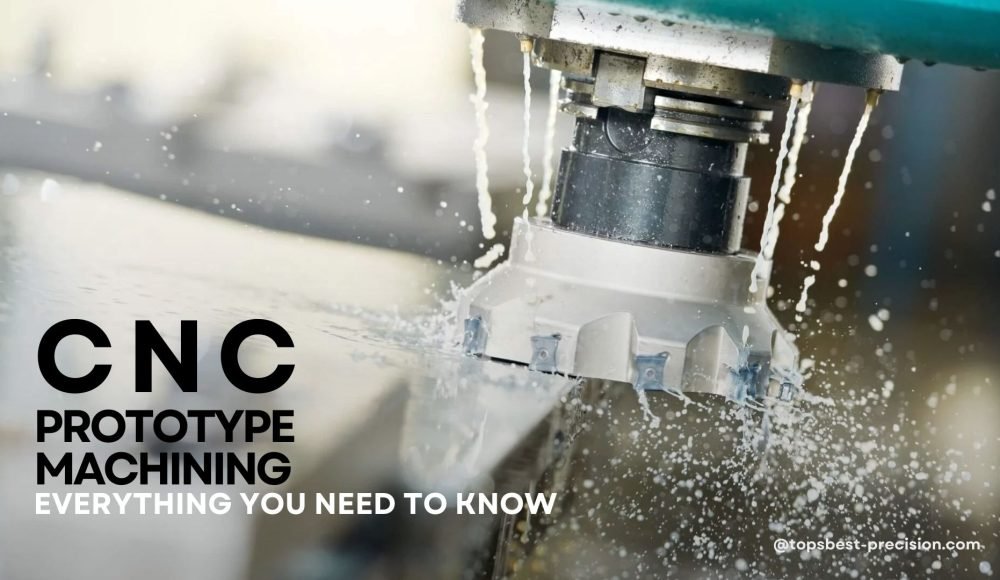
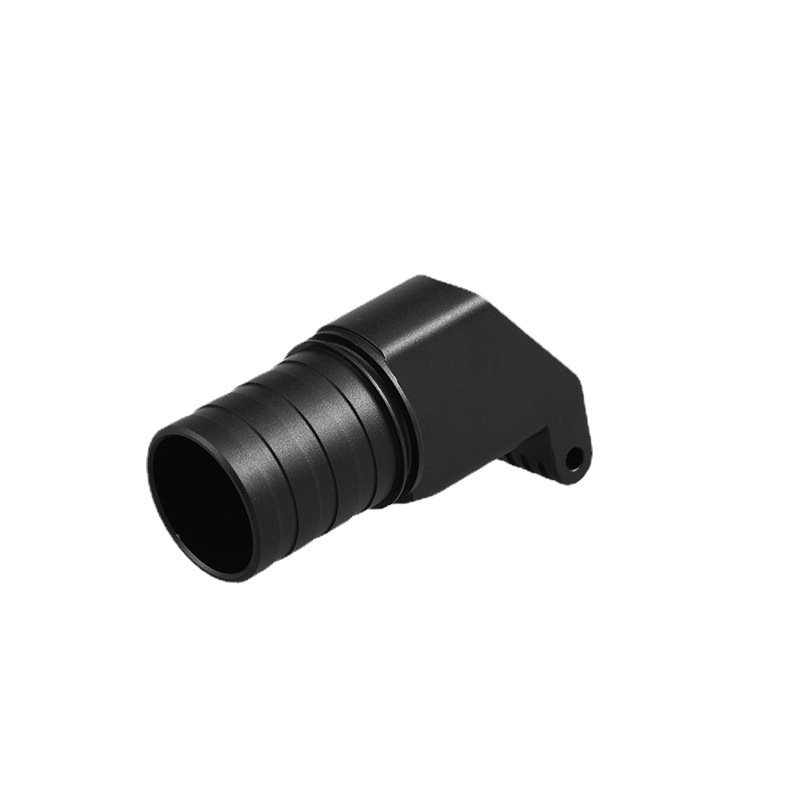

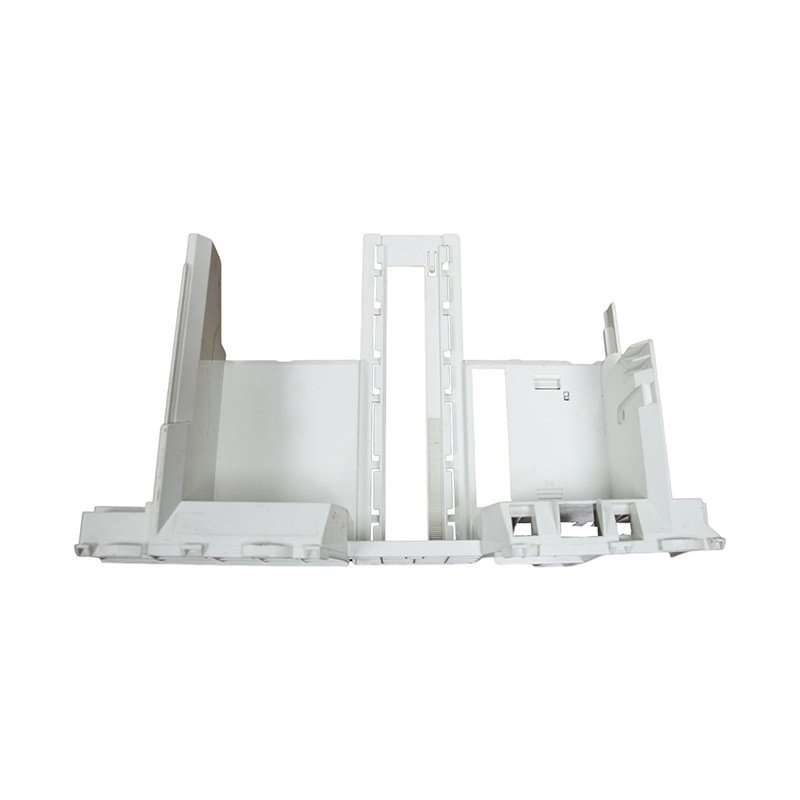
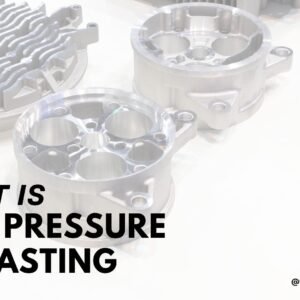
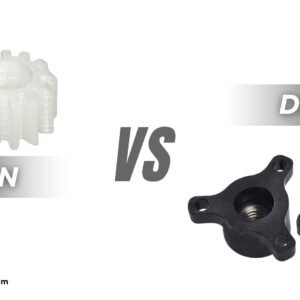
4 』への思いCNC試作加工: 知っておくべきことすべて”